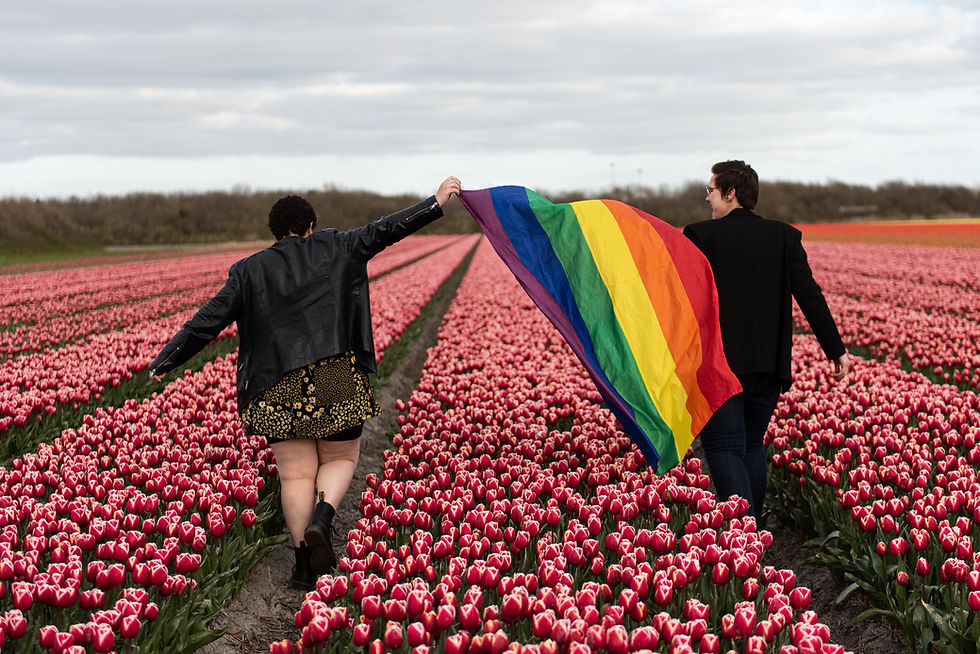Who Am I, Really? Navigating Identity with a A Whole Lot of Queer and a Dash of Grit
- Nichole Venable

- Aug 15, 2024
- 3 min read

Who am I? What the heck does that even look like? These are the existential curveballs many of my clients grapple with on the regular. And let me tell you, it's a game that gets a whole lot trickier when you're navigating an LGBTQ+ identity.
We all have to juggle our gender, job, role in society, role as a child, sibling, potential parent, friend, and individual. The list goes on until your brain short-circuits. The thing is, most of us don’t sit down with a checklist and decide who we are in each of these roles. Instead, we just kind of morph and evolve into them like the world’s weirdest Pokémon. And that’s usually fine—until it’s not.
Now, throw in a little queer spice. It’s not just about adding a letter from the rainbow and calling it a day. You’ve got to figure out how that letter fits into your life, your community, and, crucially, how others will see you through that prism. For many of us, this is where the funhouse mirrors start coming out, distorting what we see versus what others perceive.
I was lucky—ridiculously so. I grew up in a family where queerness wasn’t just accepted, it was celebrated. Picture this: It’s a holiday morning, and there’s my uncle strutting around in pink pajamas that say something cheeky like, “Your boyfriend thinks I’m hotter than you.” And that was totally fine. Everyone laughed, and he rocked that flamboyance all the way to becoming a kick-ass drag queen.
But not everyone gets that kind of start. Even with that supportive backdrop, I still find myself wrestling with what it means to be bi and straight-passing. Yep, I’m married to an incredible man, and while that’s a huge part of my life, my bi identity is still very real. So, what does that look like?
Here’s the thing: I’ve been lucky, but I’ve also seen the flip side. I’ve worked with clients who’ve been outright rejected by the very people who were supposed to love them unconditionally. Parents who’ve told their child they’d rather they die than be trans. Clients who’ve grappled with the agonizing question: “Why can’t I just be what they want me to be?” It’s in this space of loss and rejection where so much trauma festers, and the challenge becomes figuring out how the hell you stand back up after that.
But there’s hope. Today, when I work with kids, I’m seeing more and more of them come out with stories so boringly normal, they almost make me giggle. “Yeah, no big deal, everyone was cool with it,” they’ll say. And honestly, that’s the dream. Instead of a traumatic defining moment, it’s just another chapter in their life story. But whether your coming out was a nightmare or a yawn, there’s still the work of figuring out what that part of your identity means to you—and how you want to show up in it.
Here’s the beautiful part: You get to choose. We’re not stuck in the roles we think we have to play. Sure, it might take a while to find your tribe, the people who’ll love you as you are, but they’re out there. And yeah, that journey can be lonely as hell. But that’s why affirming therapy is so crucial. It’s a space where you can show up exactly as you are and be accepted.
It’s one of my unending passions to let people know that who they are is amazing, and if they want to change, they can. No one is ever too old. Whoever said old dogs can’t learn new tricks was full of it. We get to decide. And that, my friends, is powerful stuff.
Stay blunt, gritty, and witty, my friends!




Comments